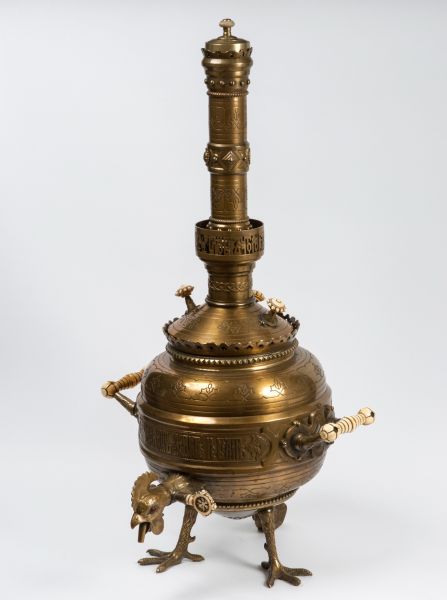|
|
Cockerel. Samovar. 1870s

Brass, casting and forging
В. без трубы-38,6 (с трубой – 65); Шир-34,4
State Russian Museum
Пост.: 1966 через ЛГЗК
Annotation
The popularity of samovars, formerly an integral part of Russian life and a unique symbol of teatime, the family hearth, coziness, and hospitality, grew in the second half of the 19th century due to the increased interest in folk life. No international exhibition of art and industry occurred without a demonstration of a samovar. The cockerel samovar, made in the “Russian style” for the Vienna World Exposition of 1873, is an example of a custom, one-of-a-kind piece. Interest in the finely rendered details and the characteristic admiration of said details are revealed in how artistically the legs of the samovar are done in the form of chicken legs or the beak – the head of the cockerel with its open beak. The inscriptions on the samovar repeat two popular Russian homilies: Do not leave a samovar on the boil and It is a poor conversation without bread and salt.

